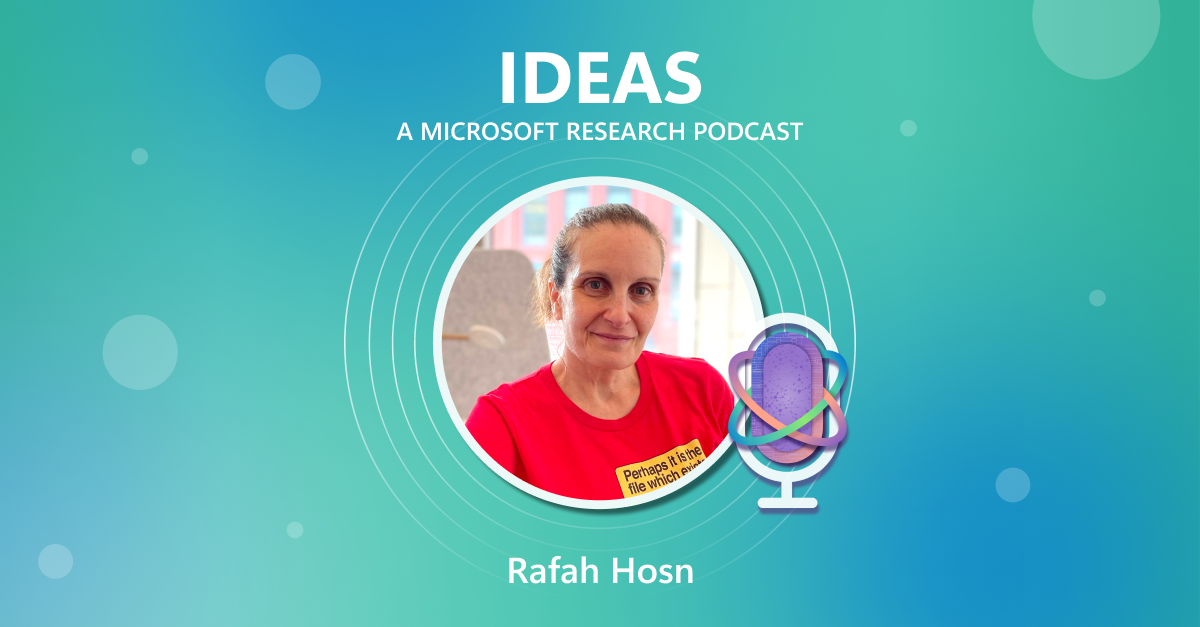By Noboru Sean Kuno, Research Program Manager, Microsoft Research Asia
The potential for virtual reality (VR) to upend industrial design, medicine, and other specialized fields has now vaulted the emerging field into the ranks of what the National Academy of Engineering calls its 14 grand challenges of the 21st century, an eclectic list of endeavors from preventing nuclear terror to securing cyberspace.
The importance of improving VR and 3D immersive communication has been a cornerstone of Microsoft’s long term investment in this technology space, resulting in multiple innovations from

Ideas: Exploring AI frontiers with Rafah Hosn
Energized by disruption, partner group product manager Rafah Hosn is helping to drive scientific advancement in AI for Microsoft. She talks about the mindset needed to work at the frontiers of AI and how the research-to-product pipeline is changing in the GenAI era.
Dr. Gene Cheung, associate professor, National Institute of Informatics, Japan
Microsoft’s Kinect for Xbox 360 Sensor, Surface Hub and HoloLens to Windows Creator update.
Collaborating with partners
Realizing more immersive communication via 3D applications requires a quantum leap in the capture and exchange of 3D geometry that can only be achieved with an ongoing commitment to signal processing research. At the heart of this effort is our collaborative research (CORE) project with academic partners including Dr. Gene Cheung, associate professor at Japan’s National Institute of Informatics, who has been tackling this problem for years.
Breakthrough
Using depth-sensing devices such as the Kinect Sensor, researchers developed an algorithm to enable better noise reduction and restore missing details across images. Crucially, they discovered a method to utilize graph-signal smoothness prior to enhancing both natural images (see Fig. 1) and depth images.

Figure 1: example of original 4-bit image (left) and bit-depth enhanced image to 8 bits using our approach (right)
Collaboration with Microsoft Research
Dinei Florencio, senior researcher at Microsoft Research, has been working alongside professor Cheung on research into “rate-constrained 3D surface estimation” and “precision enhancement of multiple 3D depth maps.”
“These two research lines are the most active in our recent collaboration,” Florenicio said. “As we make the needed progress toward immersive communication, I believe Gene’s research is bringing some fundamental contributions.”
Other key members of the project include Cha Zhang of Microsoft Research as well as Pengfei Wan, a former graduate student at Hong Kong University of Science and Technology.
Moving forward
Florencio and Chueng are now leading research into whether active light sensing can accurately detect informative bio-signals — such as pulse/respiratory rate and temperature changes on a face — to reveal stress and mood or indicate if subjects are lying. A key question of the research is whether active light sensing can be extended to reveal the same details for shaded or remote human subjects.
“The project is very interesting in that it tries to estimate bio-signals for more efficient face-to-face communications,” said Tao Mei, senior researcher at Microsoft Research. “The Principal Investigator (PI) proposed to use active imaging, which is entirely non-contact and noninvasive, to solve this problem with a novel idea by analyzing the constructed thermal and depth images in an indoor active image sensing system.”
Upon completion, Professor Cheung will make the research tool publicly available. I am looking forward to seeing continuous progress and achievements from this collaboration. We hope more researchers explore this area to expand the frontier of Virtual Reality technologies and realize Princess Leia’s holographic messaging in future.





